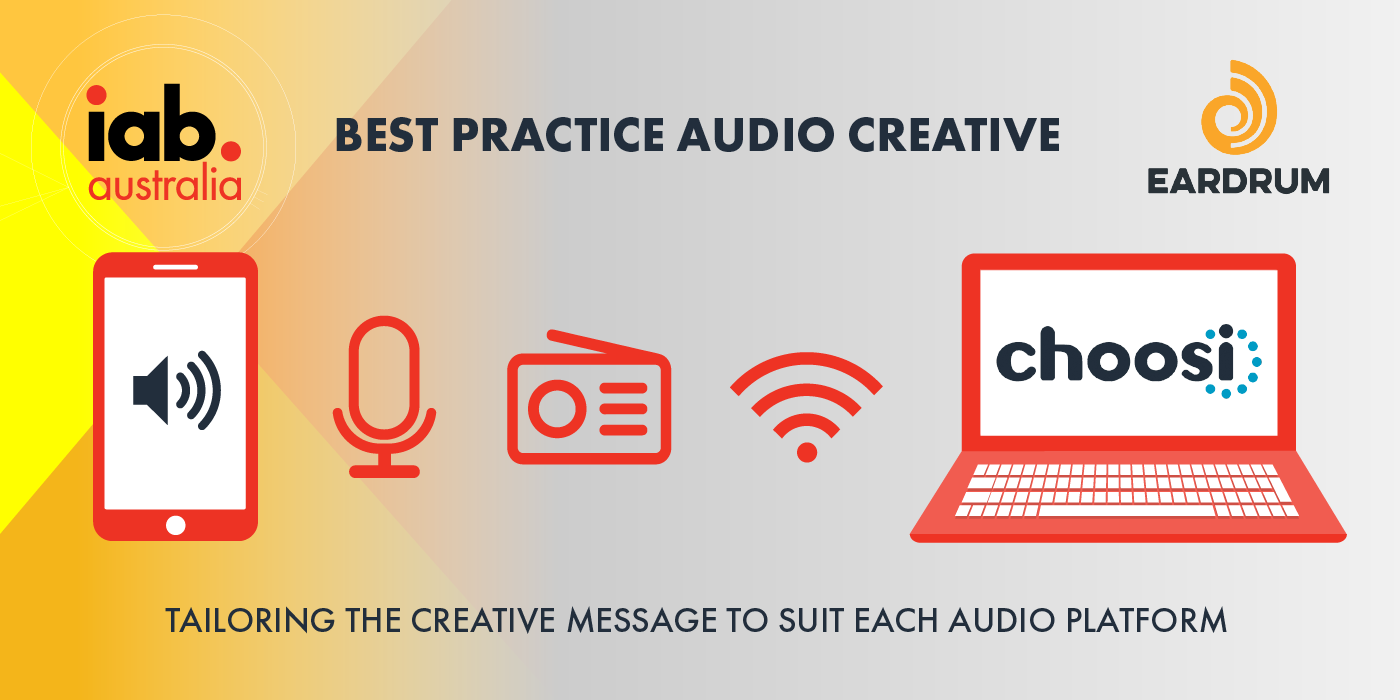There’s no one-size-fits all approach to audio. Each audio platform is consumed in a different way and has its own nuances which need to be considered. Just like you wouldn’t put a long copy print ad on a billboard, you shouldn’t simply put your radio ad in a podcast, for example.
The creative message needs to be tailored to suit each medium to ensure relevancy and impact. Working with insurance company Choosi, the IAB Audio Council, led by Eardrum in the project, set about creating best practice, fit-for-purpose audio campaigns for each audio platform.
The Concept
We live in a a world where we have more choice than ever, But instead of making things easier, consumers are overwhelmed with options and find it harder than ever to choose what’s right for them.
This is where Choosi’s team of Choosers comes in. Choosi’s helpful trio in blue appear when you need them most – when you’re trying to make a tough decision. They’ll help you compare your options and then pick the one that’s right for you.

Visually, Choosi’s point of difference is the trio of Choosers in blue who appear when you need them most – when you’re thinking about getting insurance. To extend the concept into audio and create a distinctive audio asset, we will use 3 voices in each execution to highlight Choosi’s team of choosers. The harmonic “Ch-Ch-Ch-Ch-Choosi” from the Choosi theme music was used as a distinctive brand asset.
Audio Examples
- Spotify – Targeted audio ads. Because Spotify listeners are often curating the content themselves, they have higher levels of engagement. But because they have a sense of ownership to what they’re listening to, advertisers need to work harder to avoid being seen as an unwelcome interruption. This is achieved by making the message more relaxed, conversational and relevant to the playlist and the daypart.
- Spotify – Active Ads. Noting that Spotify allows advertisers to accompany their audio with video and display ad formats, the Showcase recommends encouraging the audience to “click the banner” or “watch the video” in the call to action to continue the conversation .
- iHeartRadio – ShakeMe. With some digital audio platforms like iHeartRadio, ShakeMe technology is available, which means when a listener shakes their mobile, an interaction such as making a call or opening a website is triggered. This allows listeners to respond to an ad immediately and simply making it ideal for direct response messages.
- Podcasts – Host Read Pre-roll. Much like a live read on radio, a host-read message at the start of a podcast needs to be in-keeping with the host’s regular style and ideally made relevant to the podcast subject matter.
Sponsored Podcast. Noting that podcasts are the perfect medium for special interest subjects and niche audiences, the Showcase notes that any link to its product or service will need to be very subtle.
-
- Radio – Commercials. Radio listening is usually habitual, with audiences tuning into the same station at the same time of day and in the same place. If you tailor your message to match the daypart it is broadcast, you will increase cut through and relevance.
- Digital Home Assistants. Smart speakers are making it easier for consumers to navigate and search online using their voice, but the Showcase explains this makes it harder for brands to have the same presence they had when appearing in sponsored search results on a screen. The Showcase recommends that advertisers should consider creating useful apps and skills that are relevant to their category which will benefit their customers, such as guestimate voice app allowing customers to obtain a ballpark quote without having to enter detailed information on a website.
- IVR Messaging. The Showcase notes that given callers spend between 10-20 minutes on hold each and every week, brands would be wise to use the time to reference its charitable activities or entertain them by playing its branded podcast, but should not try to sell to customers who are made to wait.
